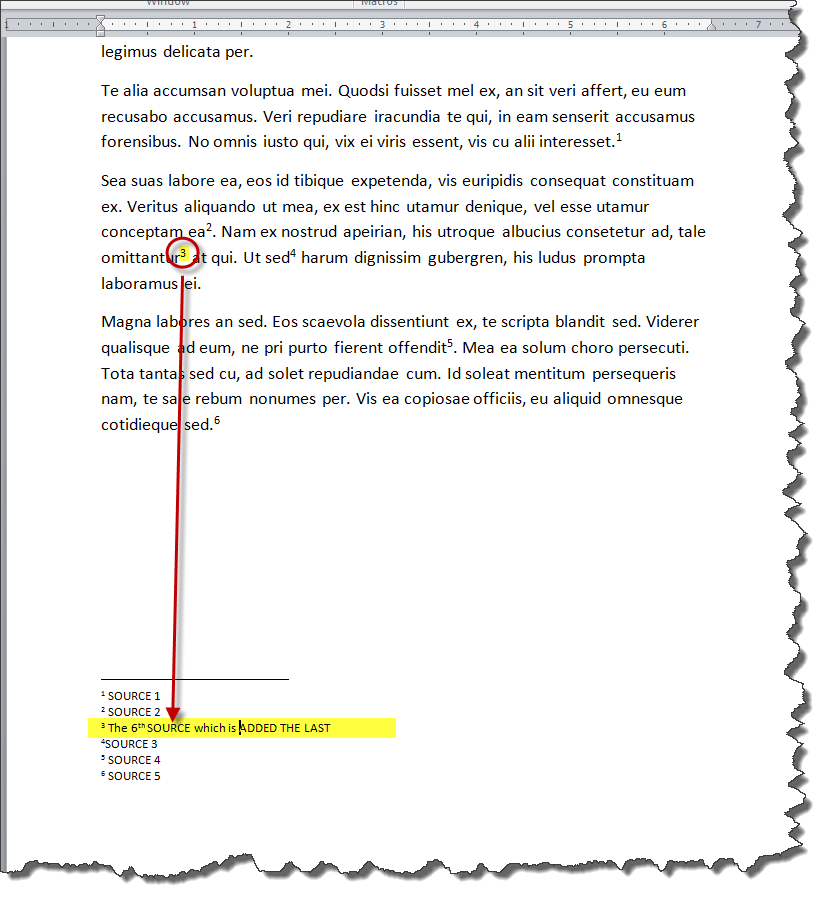

(Of course, if the custom style is based on the Normal style, you might get some "trickle down" formatting that affects how the custom style looks whenever you make changes to the Normal style. In this way you can use the Normal style for other purposes, and as you change that style it won't affect the custom style you applied to the separator lines. You can then, within the footnote area, apply the style to the separator lines. The second approach is to define a custom style that you intend on using for your separator lines. On a Mac, press Command + Option + F to create a footnote, or Command + Option + E to create an endnote. Alternatively, you can press Ctrl + Alt + F to create a footnote, or Ctrl + Alt + D to create an endnote in Windows. That way the Normal style remains unchanged and you won't have unintended consequences such as you see with the Footnote Separator line. In Word 2004/2008, click Insert Footnote. Pick another style-perhaps Body Text-or create your own custom styles to use for your text. Besides the steps already outlined, there are two other ways around this problem.įirst, you can make a personal rule that you never use the Normal style for any of your regular document text. If these lines start showing some strange formatting characteristics, it is more than likely because you've made some changes in how the Normal style is defined. By default, the Footnote Separator and the other separator lines used by footnotes and endnotes all use the Normal style. While the above works just fine, there is one other thing you might want to keep in mind.
How to create a footnote in word 2010 how to#
Then, writers will revise the paper as many times as it is How To Write A Footnote In Word 2010 required for customers to be fully pleased with their orders. The current separator appears in the window, and the insertion point should be within the separator. How To Write A Footnote In Word 2010 to make necessary changes. If you already have footnotes in your table, go to the Footnotes setup at References Footnotes and click the arrow icon at bottom right of that section.
How to create a footnote in word 2010 free#
If that text has footnotes, you’re free to use Footnotes.

Step 3: You'll then be taken to the bottom of the page to type in your footnote. Step 2: Then press the following keyboard shortcut: Alt + Ctrl + F. Step 1: Pick the location for your footnote and click on it. In that case, you can just use a quick and handy keyboard shortcut. If you know you need to add a lot of footnotes to your project, you may not want to navigate to the References tab every single time you want to add a footnote. Screenshot How to insert footnotes in Word: Use a keyboard shortcut Doing so will take you back to where you were in the document itself. Step 5: When you're done typing your note, double-click on the tiny number located just before the note you just entered. Step 4: You'll immediately be taken to the end of the page to a space where you can enter your footnote. Step 2: Select the References tab from the ribbon menu at the top of the screen. Step 1: Choose your desired location for the footnote in your document. The screenshots featured in this article were taken of Word for Microsoft 365. The following instructions should be applicable to the following versions of Microsoft Word: Word for Microsoft 365, Word 2021, Word 2019, Word 2016, Word 2013, Word 2010, and Word 2007.


 0 kommentar(er)
0 kommentar(er)
